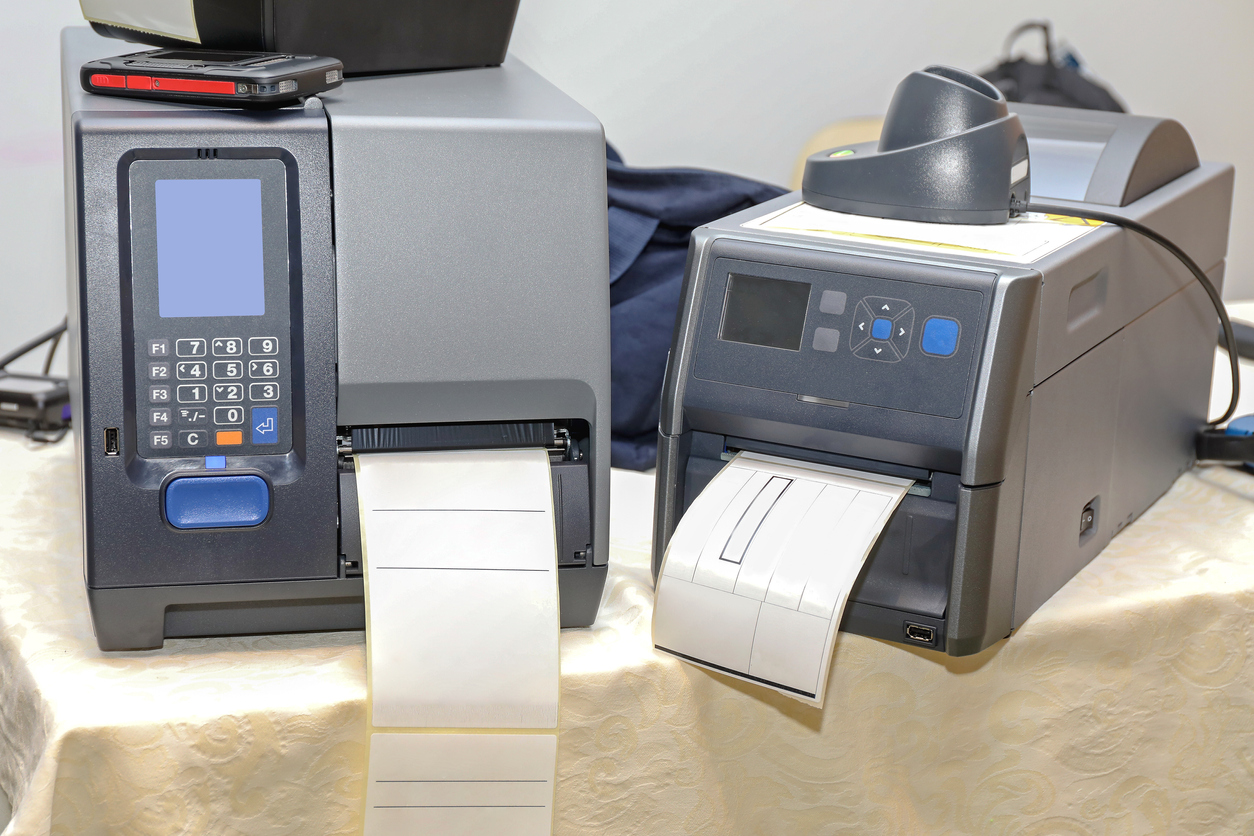What is a Thermal Printer and How Does it Work?
A thermal printer is an excellent choice for making durable, long-lasting labels for various industries. The two types of thermal printers — thermal transfer and direct thermal — both are commonly used to produce high-quality, consistent images on various mediums. Additionally, they offer multiple benefits over traditional inkjet and laser printers.
How do you know when to use a thermal printer over an inkjet or laser printer? How do you know whether thermal transfer or direct thermal is best for your business? Let’s review thermal printing applications along with the difference between thermal transfer and direct thermal printers.
Why Use a Thermal Printer Over an Inkjet or Laser Printer?
Inkjet and laser printers are great for a few essential applications: office print jobs, printing photographs, and creating temporary signage like short-term notices, announcements, and reminders. However, they are not equipped to handle printing for manufacturing applications. As the fastest and lowest-cost method available for label making, thermal printers are most commonly used to produce high-quality, durable labels for various industries.
Laser printers are not optimal for printing adhesive-backed media; the higher temperature of the laser printer fuser station may cause adhesive bleeding from the label, resulting in adhesive residue buildup inside the printer. The buildup will eventually cause the printer to fail. Conversely, adhesive bleed is not a problem for thermal printers because their operating temperatures are much lower than laser printers.
Inkjet printed labels do not offer the same durability as thermal printed labels. Ink-based labels are easier to smudge or stain, and the quality diminishes when exposed to moisture, sun, or abrasion. Inkjet printers are also more complicated and have more moving parts than thermal printers, increasing maintenance costs in the event of a breakdown.
What’s the Difference Between Thermal Transfer and Direct Thermal Printers?
Thermal transfer printers are usually larger than direct thermal printers and use a thermal ribbon to produce an image. The printer applies heat to its printhead, which melts the wax- or resin-based ribbon onto the label. The ink from the ribbon bonds to the label, creating the image. Thermal transfer printers are used for product identification, circuit board tracking, identification cards, sample and file tracking, asset tagging, inventory identification, UL labels, and outdoor applications.
Direct thermal printers are more compact and don’t require ink, toner, or ribbons. Like thermal transfer printers, the direct thermal printer also applies heat to the printhead. As the labels pass underneath the hot printhead, the chemically treated paper darkens, producing the image. Direct thermal printing is often used for shipping labels, patient and visitor identification, receipts, and ticket printing.
How Do You Choose Between Thermal Transfer and Direct Thermal Printers?
Both thermal transfer and direct transfer printers offer benefits over inkjet and laser printers. They produce reliable, consistent images and have lower maintenance costs. However, thermal transfer printers offer a wide range of benefits over direct transfer printers.
Thermal transfer labels are resistant to heat and moisture and cannot easily be rubbed off, making them more durable than direct thermal labels. If you select the right media-ribbon combination along with specific adhesives, you can create labels that will withstand extreme temperatures, ultraviolet exposure, and chemicals.
While they can have a long shelf life, direct thermal labels are not suited for heat, long periods of sunlight, or abrasion. If exposed to heat or light, the material will darken and the barcode will become unreadable.
Thermal transfer printers also require less upkeep than direct thermal printers. Thermal transfer print heads last longer than direct thermal print heads. Direct thermal printing requires the print head to make direct contact with the label material as it goes through the printing process. However, in thermal transfer printing, the ribbon acts as a buffer between the print head and label, reducing the amount of wear.
Still Not Sure What’s Right for You? Turn to the Thermal Printing Experts
At DRG, we specialize in thermal printers, durable label solutions, and supply chain organization. We’ve refined our processes over the last 30 years and can help you pinpoint exactly which type of thermal printer, ribbon, printing medium, and adhesive you need to create quality products. We can offer your business an in-plant evaluation to determine the most efficient solution for your unique need.
We also provide turnkey thermal transfer printing services encompassing ribbons, print media (blank and semi-preprinted labels), label making software, maintenance, technical support, and kitting. With our extensive knowledge and experience in the label-making industry, we can consolidate your labeling needs in a cost-effective, reliable way and create long-term sustainability for your supply chain.
Should your business need UL-approved labels, our manufacturing facilities meet the strict UL compliance requirements. Additionally, imprinting with UL-approved kitted ribbon provides your business a higher level of customization.
Begin Your Thermal Printer Journey Today
We’d love to hear more about your thermal printer needs and offer our assistance. Contact us today to get started.

